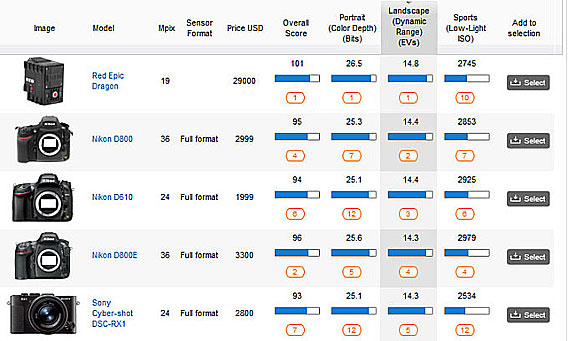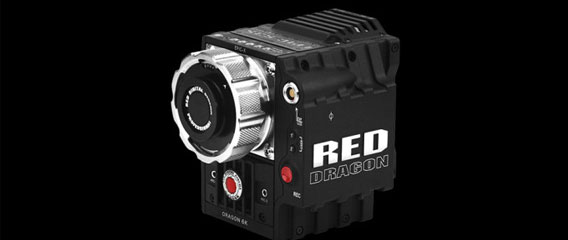DxOMark Confirms the Red Epic Dragon Sensor Outperforms the Nikon D800E
Red has been teasing the photography and videography world for along while before the release of their new Epic camera sporting the Dragon sensor. Right from the beginning there was word that this new sensor would be revolutionary in terms of image quality, especially concerning dynamic range. And indeed, when first footage taken with the Red Dragon surfaced, we were stunned by the quality it delivered. It seemed as though Red hadn’t promised too much.
 Now that the latest-generation modular cinema camera is nearing availability, everybody wants to know how it really performs. Lucky for us, the people over at DxOMark had the chance to play with a prototype unit and put it throught their regular testing procedures–with amazing results. Usually, DxOMark only tests still cameras, so for testing the Red Dragon’s performance, they had to extract stills from the 6K raw footage the Red Dragon records.
Now that the latest-generation modular cinema camera is nearing availability, everybody wants to know how it really performs. Lucky for us, the people over at DxOMark had the chance to play with a prototype unit and put it throught their regular testing procedures–with amazing results. Usually, DxOMark only tests still cameras, so for testing the Red Dragon’s performance, they had to extract stills from the 6K raw footage the Red Dragon records.
What they then found when they analyzed the resulting images is nothing short of spectacular. DSLR fanboys hold your breath, because what comes now might totally shatter your beliefs. The Red Epic Dragon’s sensor scored an overall 101 points in DxOMark’s test, the highest score any camera tested by DxOMark has ever achieved. But it’s getting even better. In both dynamic range and color depth, the Dragon sensor managed to outperform the both the Nikon D800 and D800E, while in color depth it even managed to outperform top-level medium format models from Phase One.
The Red Epic Dragon’s sensor is able to record 14.8 stops of dynamic range at its base sensitivity, which is 0.4 EV more than the Nikon D800, the current top performer. While half a stop may not sound like much, it might just make the difference in order to preserve precious highlight information. In terms of color depth, the Dragon sensor was measured with 26.5 bits, which is the same as the Phase One IQ180, and 0.9 bits more than the Nikon D800E.

But not all is lost for Nikon. In one department, the Red Dragon wasn’t able to beat the DSLR, and that is high ISOs. Due to the lack of analog signal amplification, the Dragon sensor–which, by the way, is significantly smaller than the 35mm full-frame sensor you find in top-level DSLRs–only scored 2745 points, which is only 1 point lower than Sony’s mirrorless full-frame wonder, the A7R. However, the current king of low light, the Nikon Df, scored 3279 points thanks to its relatively low resolution of “only” 16 megapixels.
From whichever angle you look at it, though, the results are amazing. The Red Epic Dragon might not be a still camera, but comparing it to high-end DSLRs is legit due to the video capability (and frequent use in video productions) of the latter. Considering that the Dragon sensor is only about the size of the APS-H format (comparable to that in Canon’s EOS-1 series DSLRs,) and sports almost 20 million pixels, Red managed to squeeze a mind-boggling amount of information out of the data.
It is unlikely that the sensor will ever make its way into DSLRs or mirrorless cameras, but at some point the technology behind it–whatever magic dust Red sprinkled onto the sensor in order to achieve these results–will make into regular still camera sensors. And at some point in the future, there will be a DSLR or a mirrorless camera outperforming the Red Dragon. But that is not now, and until then, the Dragon sensor will be the most awesome picture-taking device out there.

© 2014 Copyright ShootTheCenterfold.com. All rights reserved.




















